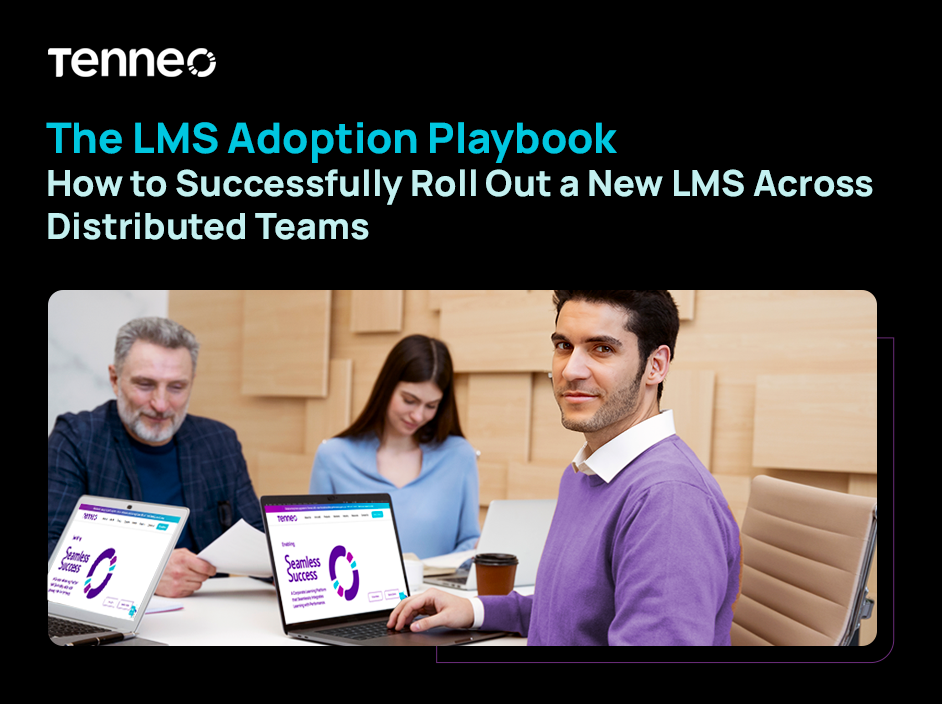
How Does Learning Management Systems Deliver Just-in-Time Learning For Corporate Training
May 31, 2023
Essential Social Learning Features Supported By Modern Learning Management Systems At The Workplace
May 31, 2023
How Does Learning Management Systems Deliver Just-in-Time Learning For Corporate Training
May 31, 2023
Essential Social Learning Features Supported By Modern Learning Management Systems At The Workplace
May 31, 2023Blog - 22 Mar 2023 | 6 Min
Attractive UI & Personalized UX – User Features That Remain A Top Priority For Modern LMSs

Technological advancements have paved the way for learning to take place anytime and anywhere. As workplace training is becoming more significant than ever, a smooth user interface is not merely a ‘nice-to-have’, but a necessary feature for all LMSs. Icons, menus, buttons, welcome screens and more are some of the components that make up a good interface of an LMS. The UI should be easy to use, visually appealing and intuitive, with an ability to meet the pertinent learning needs. UI/UX is overlooked in corporate systems over features, functionality and flexibility. This is creating a natural resistance amongst end users who are currently exposed to vastly better interfaces in the B2C space (Facebook, Google, Linked-In etc.). Therefore, most corporate systems tend to look at the barebone functionality and not the aesthetics or the ease of use in their design.
What Does a Better UI/UX Mean?
One of the prime measurements for successful implementation of an LMS is the actual number of users who end up using the system. With easy to navigate and attractive features of an interface, the chances to retain employees also increase.
"As per the Brandon Hall Group research in 2016, around 44% of the organizations considered replacing their online learning systems, with approximately 90% of them wanting to enhance their User Experience (UX)."
UX is not merely usability, but is directly associated with an individual’s satisfaction based on factors such as system, learner and purpose. Moreover, in today’s rising virtual workforce, interface is the only mode for learners to communicate with the system. A bad UX leads to poor engagement which can be daunting to turn around. Intuitiveness of design leads to better UI. A person being visually able to decipher what they are seeing and what they need to do. Familiarity also is a big factor here, if the ‘like’ button looks like the Facebook ‘like’ button you would intuitively know what it’s for. Whereas Personalization of UX enables a user to change the systems behavior which suits his/her personal learning preferences.
Aesthetics leads to a better UI. Pleasant designs, graphics and placement of UI elements capture a user’s interest. Performance leads to a better UX like shorter load times, easier access to content and better searches. Information availability and better visualization of the information is better UI (charts, graphs, counters etc.), while better call to actions is better UX (the ‘like’ icon showing the number of likes and clicking on it liking the content is an example of both).
The Importance of UI/UX in LMS
As per Brandon Hall Report, the most common systems that learning technology integrates with are HRIS (37%), content management (29%), and talent management (28%). For many of these systems, organizations are finding it important, if not critical, that their future learning systems integrate. One of the essential features of our LMS is its responsive design, which uses the uniformity to deliver an exceptional user experience on multiple devices (laptop, desktop, tablet & smartphone). The interface uses drawers, endless scrolling, intuitive search, expandable sections and filtering systems to ensure that content accessibility is easy and quick.
Today, when we talk about technology-based learning, digital learning and LMS are discussed in the same breath. Choosing an LMS with attractive UI/UX is the priority for modern organizations when making a decision on what to implement. For LMSs to impart an engaging learning experience, a learner’s collaboration with the system should be straight forward so that it does not become a hurdle to the e-learning process. LMS promotes self-paced learning and that is why it is imperative that users come back to it again and again. LMS should be used as a self-improvement platform. Faulty UX hampers the user’s ability to use the platform for this purpose as it’s conceived as too cumbersome.
The Final Word
Modern LMS interface is well-designed and seeks the attention of maximum users. Due to aesthetic elegance and usability of the UI/UX, the overall learning uptake is improved. Tenneo (formerly G-Cube LMS) LMS V7.0 is the updated release of our proprietary LMS created with a new-age philosophy in design and implementation to impart an engaging user experience. Managers as well as administrators are able to plan better and generate precise learner insights through in-depth business knowledge and Return of Investment (ROI).
An in-depth understanding of the different facets of modern LMSs, is crucial to business success. An intuitive UI is one of the prime facets that not only aids learners to access courses as per their needs, but helps them utilize and retain knowledge. The seamless experience leads to greater usage – all summing up to the pot of gold at the end of the rainbow – Greater learning and Higher ROI.
Related services
Product Engineering



